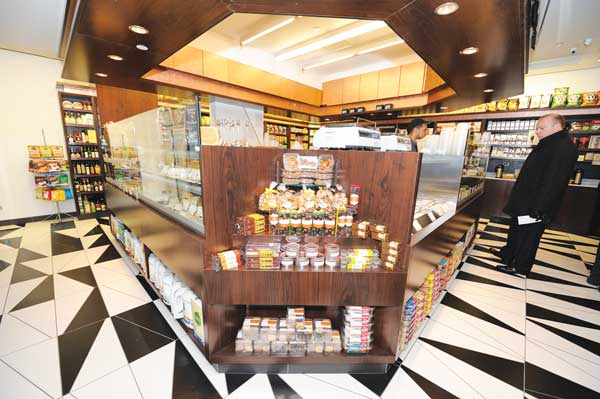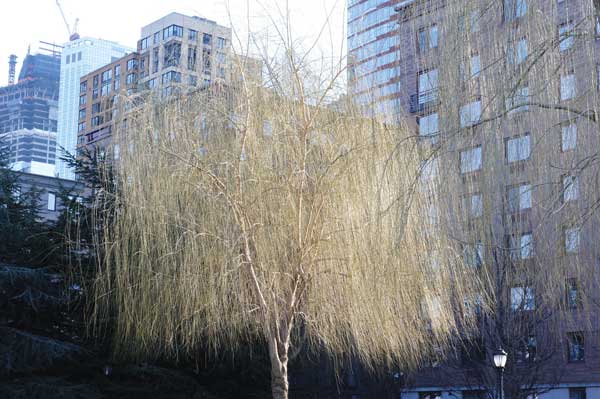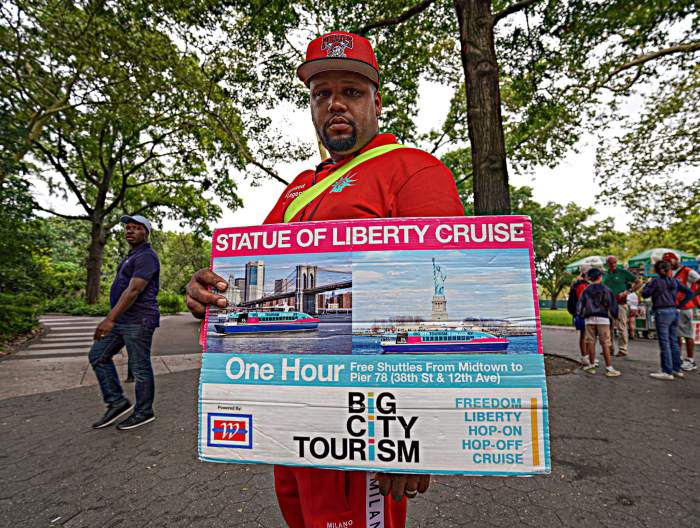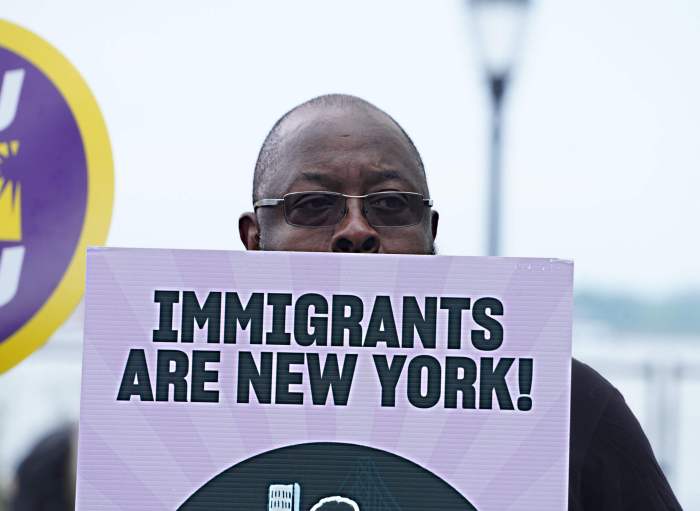 [/media-credit]
[/media-credit]
- Battery Place Market opened at 240 Murray St. in the Goldman Sachs headquarters building on Jan. 30 and has proven so popular that its hours have been extended.
BY TERESE LOEB KREUZER | Battery Place Market is a hit: When the Battery Place Market at 77 Battery Place spawned a satellite in the alley between the Goldman Sachs headquarters building at 200 West St. and the Conrad Hotel, there was every expectation that it would do well. But after less than a month, Frank Gelman, a spokesperson for the market said, “The reaction has been incredible!”
At first, said Gelman, the market was open until 11 p.m., but the demand has been so great that it now closes at 1 a.m. “We may have to go to 24 hours,” he said. “We’re busy at breakfast and lunch; now we’re getting very busy at dinner, and there’s a rush at midnight. There are a lot of financial firms that trade 24 hours a day in Battery Park City. We’re the only place open this late.”
The 1,400-square-foot market debuted on Jan. 30 with a mix of prepared foods, groceries and specialty items. Pastries come from Ceci Cela, Dough, Robicelli, Pie Country, Pie Corps and RoRo’s. Callie’s buttermilk biscuits from South Carolina are in the freezer. Van Leeuwen Artisan Ice Cream is sold by the pint and will soon be available in single-serving cups. Coffee is by Stumptown Coffee Roasters. Breads that can be purchased by the loaf or enjoyed in sandwiches come from the Sullivan Street Bakery, Orwashers and Eli’s.
The prepared food section is under the direction of executive chef Robert Sckalor, with everything made from scratch. Two kinds of soup are offered each day, along with a wide variety of sandwiches, salads and platters that include a main dish and two side dishes.
Sckalor said that the clientele at the new Battery Place Market is even more diverse than in the first store. “We’re seeing a lot of Asians here,” he said, which has caused him to alter his menus. He is now making lamb and chicken vindaloo and tikka masala in addition to offerings such as beef meatballs and chicken cutlets.
Battery Place Market opens at 6:30 a.m. during the week and at 7 a.m. on weekends. The address is 240 Murray St. The phone number is (212) 323-6965. They deliver.
Vince Smith Hair Experience does Fashion Week: Vince Smith and his team from Vince Smith Hair Experience at 300 Rector Place are still glowing from their Mercedes Benz Fashion Week gig at Lincoln Center. On Feb. 13, they did the hair and make-up on 15 runway models for the first New York showing of a collection by a young Italian design team, Prete and Bruno.
“That’s really the top spot for any hairdresser — to be involved in that show,” said Smith. He said that the classic beauty icons of Hollywood of the 1940s and ‘50s inspired Prete and Bruno. “They sent me pictures to give me a direction to go in,” Smith said. “We met the night before the show and I showed them a couple of different looks and they chose one of them. They were really happy with how it turned out. We kept the hair very classic, with a modern twist — pulled tight into a high chignon but not too sprayed and teased. The make-up look was a sexy, smoky eye with metallic gold and a nude, pink lip. Everyone loved it.”
Smith said he had done fashion shows before, but never during Mercedes Benz Fashion Week. “It’s exciting and glamorous,” he said. “It’s a great way to express your creativity. It takes it to another level.”
B.P.C.A. chairman Thompson ramps up mayoral campaign: William C. Thompson, Jr. currently has two jobs. He is Chairman of the Hugh L. Carey Battery Park City Authority and Senior Managing Director of Siebert, Brandford, Shank & Co. LLC, the nation’s largest minority public finance firm. But he has made no secret of the fact that he really wants to be mayor of New York City. On Feb. 23, he unveiled his website, www.billthompsonformayor.com. Asked if a ramped-up mayoral campaign might affect Thompson’s ability to chair the B.P.C.A., Matthew Monahan, a spokesman for the Authority, said, “The chairman stays up to speed on B.P.C.A. issues.” He also said, in answer to a question as to whether Thompson maintains an office at the Authority, “B.P.C.A. has always made an office available for its chairperson.”
Whether there will be some overlap between Thompson’s mayoral campaign and his position at the B.P.C.A. remains to be seen. Two senior officials of the Authority worked with Thompson during his years as New York City comptroller and Anne Fenton, now assistant to B.P.C.A. president Gayle Horwitz, was Thompson’s director of communications during his run for mayor in 2009.

Babylon willows: On the verge of spring, the branches of the willow trees outside the Museum of Jewish Heritage gleam like spun gold in the morning sunlight. They were given their name, “Babylon willows” (Salix babylonica) by the famed botanist Carl Linnaeus (1707-1778), who thought they were the willows mentioned in Psalm 137 — “By the rivers of Babylon, there we sat down, yea, we wept when we remembered Zion//We hanged our harps upon the willows in the midst thereof.” However, it turns out that Linnaeus was mistaken. The trees growing along the Euphrates River in ancient Mesopotamia (modern Iraq) were poplars, not willows.
Babylon willows originated in northern China but were cultivated for thousands of years as ornamental plants elsewhere in Asia. They were disseminated along the Silk Route to southwest Asia and Europe.
There are around 400 species in the genus, Salix. The leaves and bark were used in ancient Assyria, Sumer and Egypt to assuage aches and fever. The Greek physician, Hippocrates, knew of the willow’s curative powers. Willows contain salicin, which is related chemically to aspirin.
Willows have many other uses. Their pliable branches lend themselves to being woven into baskets, fish traps, furniture and even supports for the plaster walls of houses. Their strong, interlaced roots prevent soil erosion along the banks of streams. They are mentioned in the iconography and mythology of many religions and folk tales. The willows planted outside the Museum of Jewish Heritage have a tie to Judaism in addition to their name. Willows are one of the four species used ceremonially during the Jewish holiday of Sukkot, observed in the fall.
To comment on Battery Park City Beat or to suggest article ideas, email TereseLoeb@mac.com.

















